Haiku
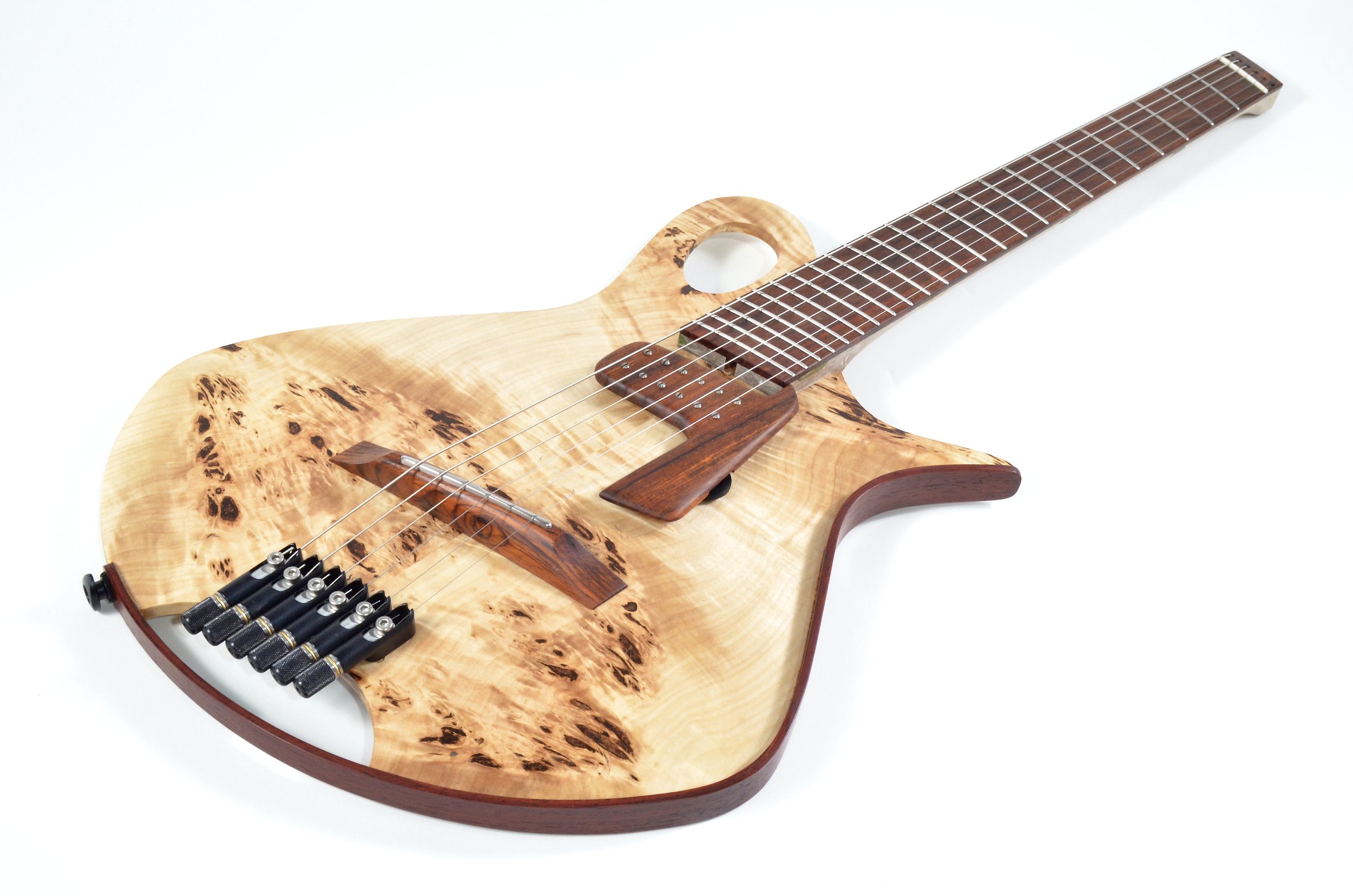
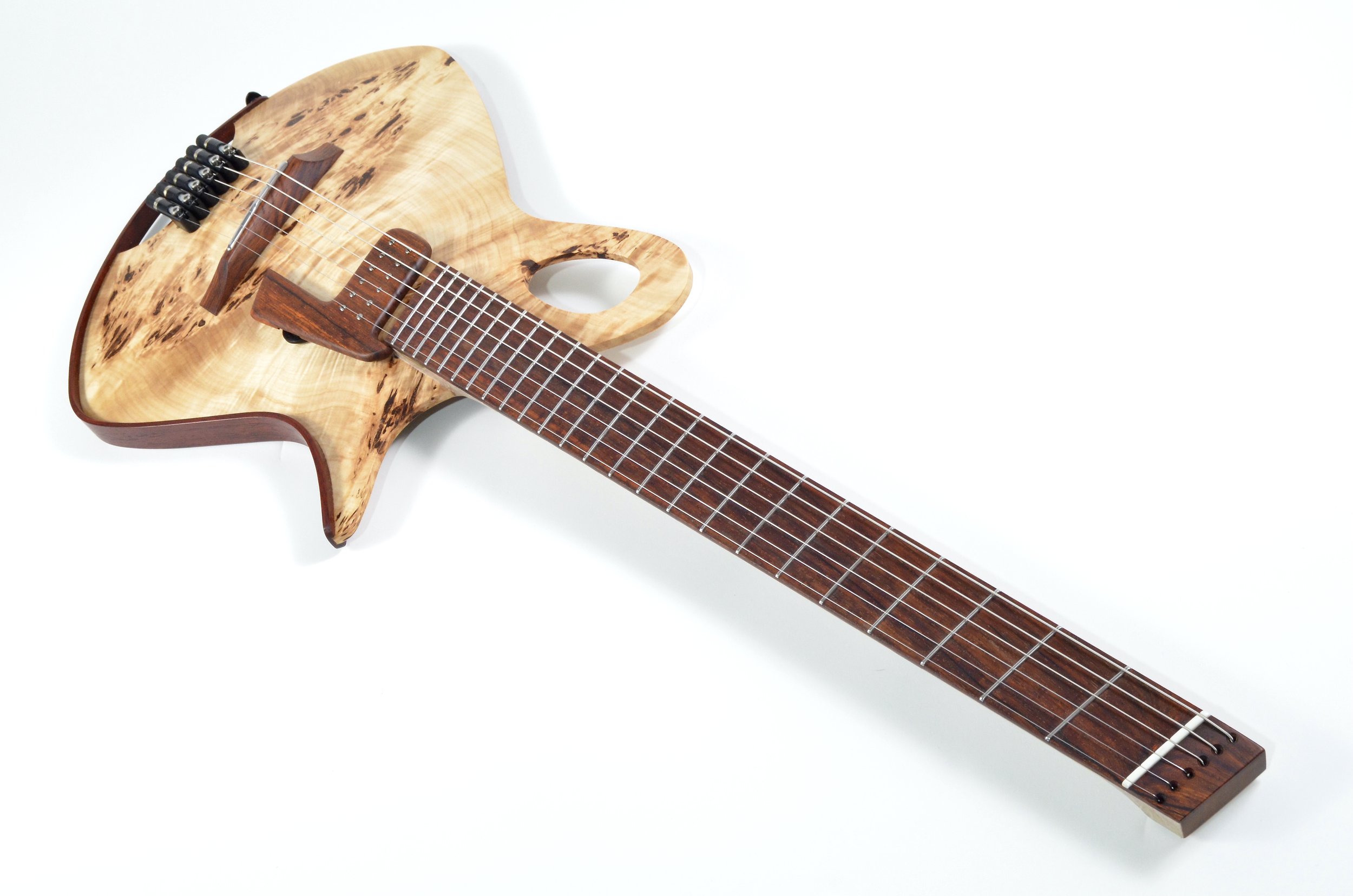
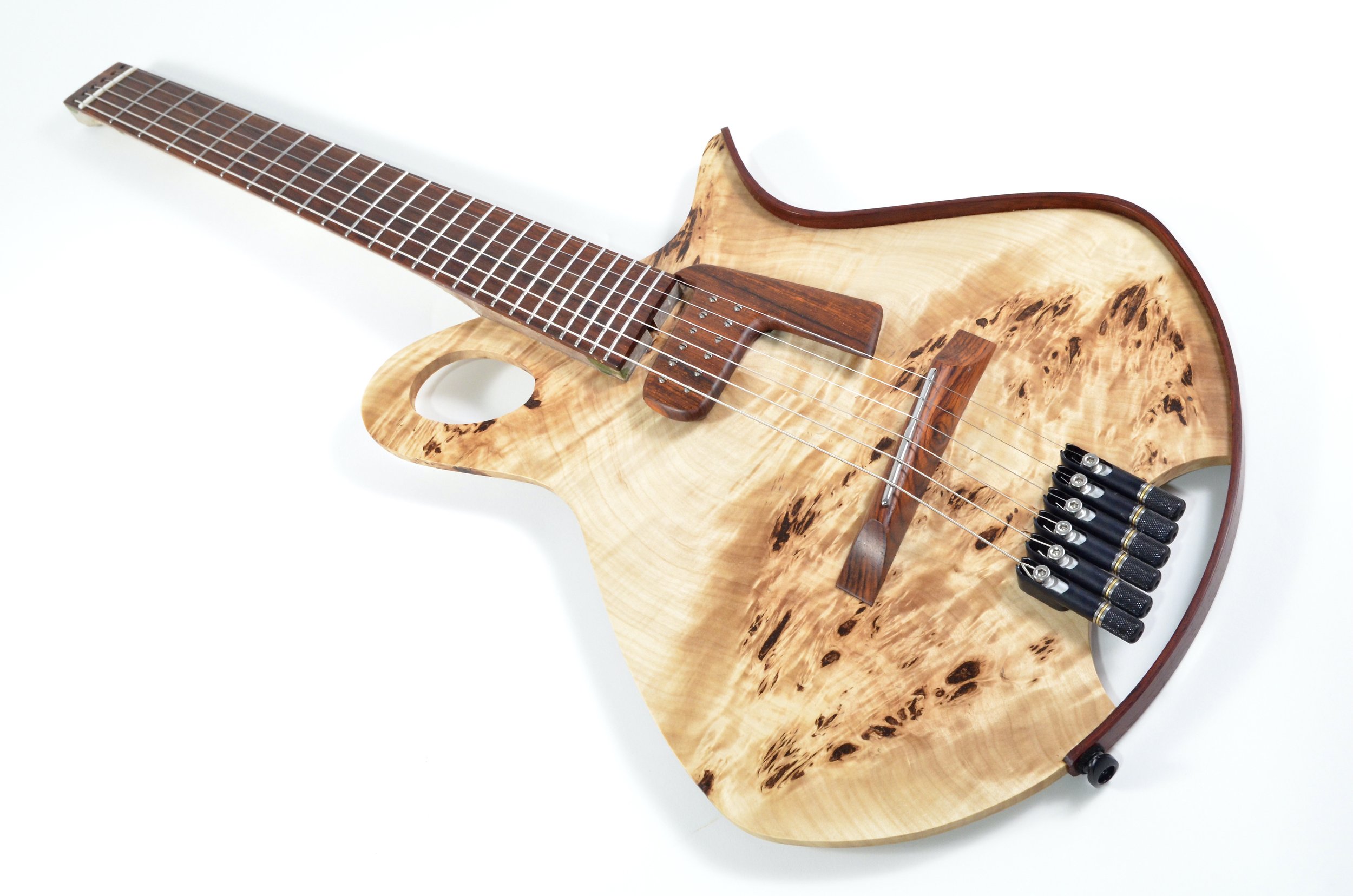
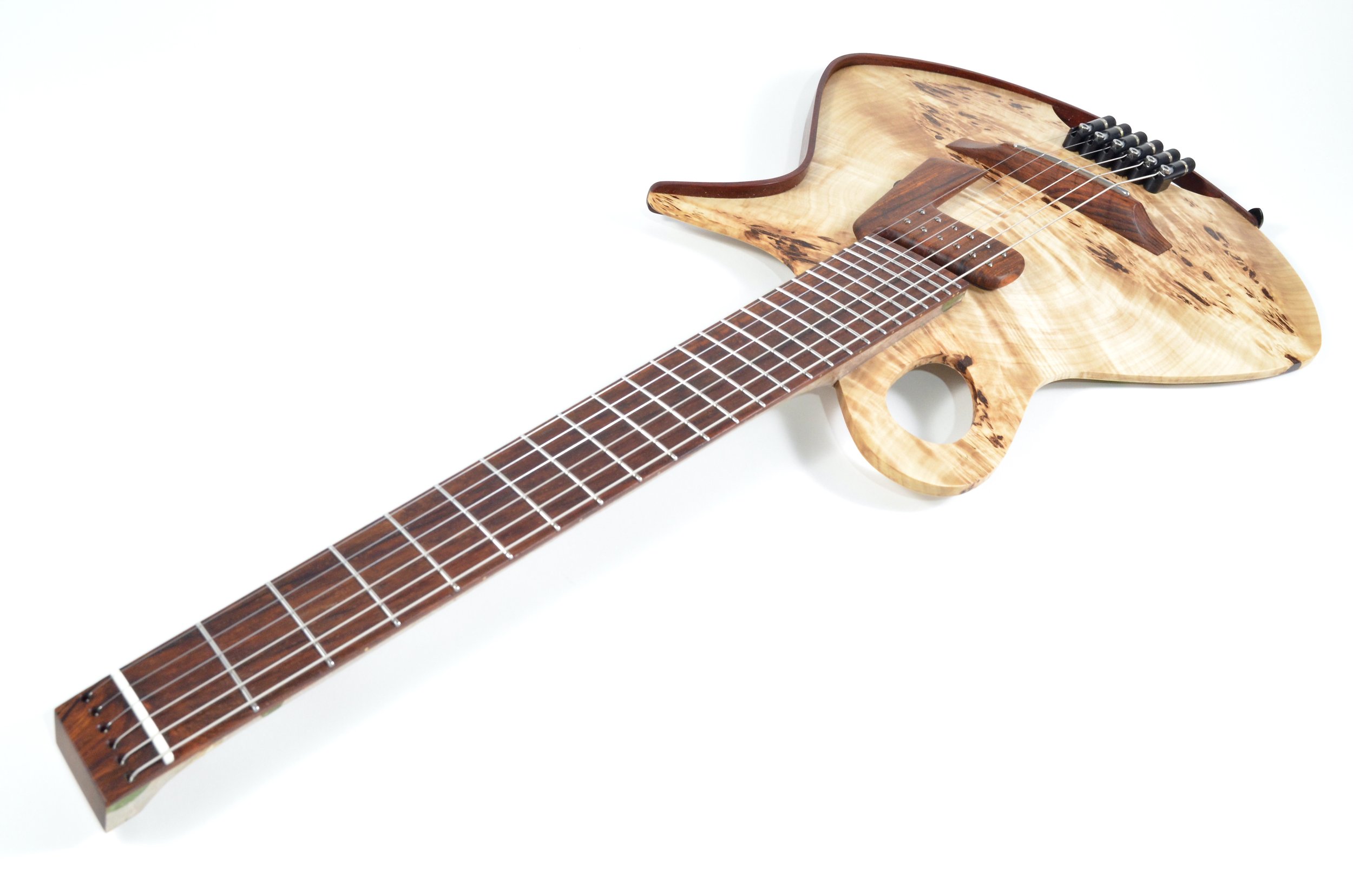
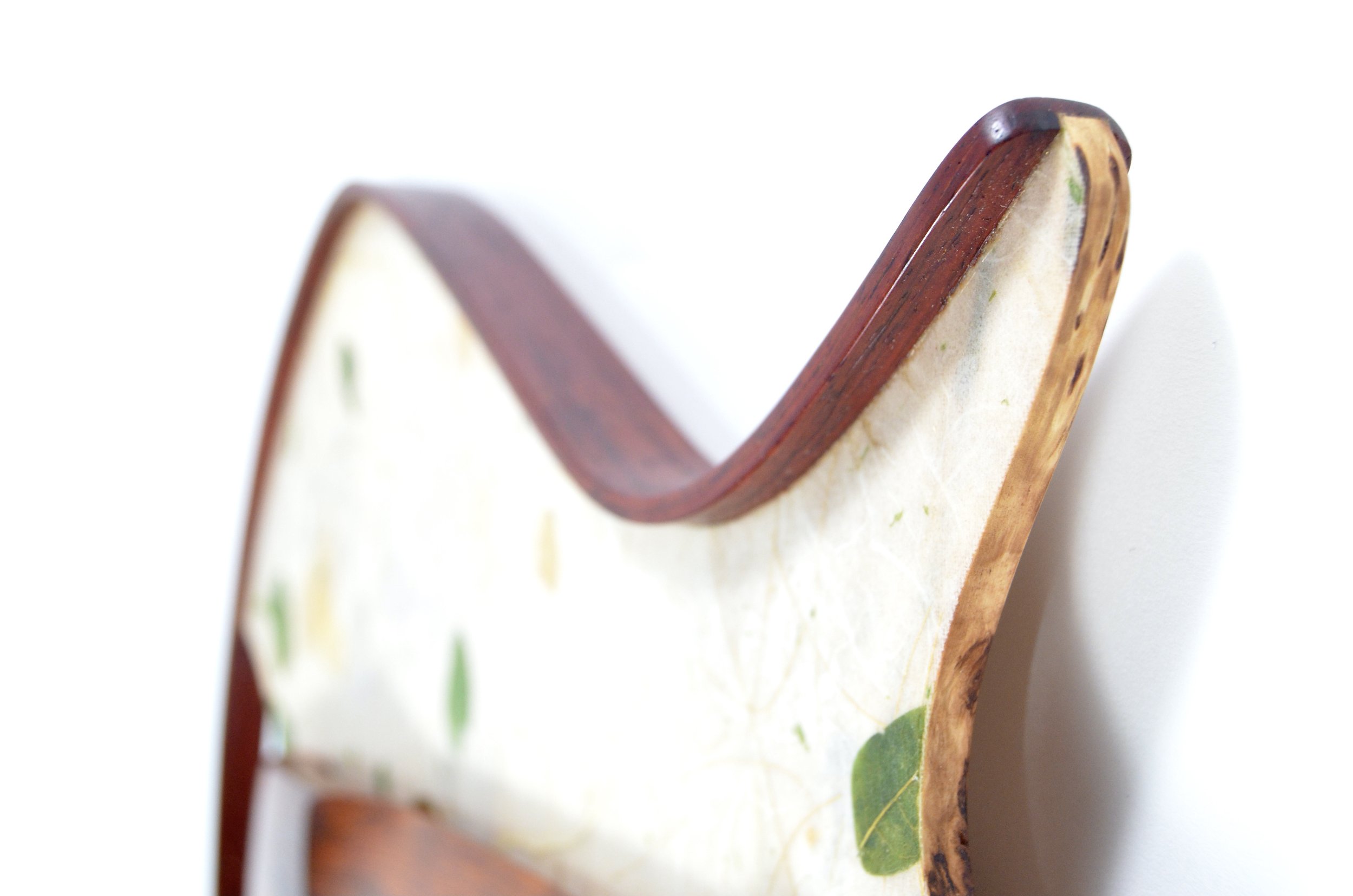

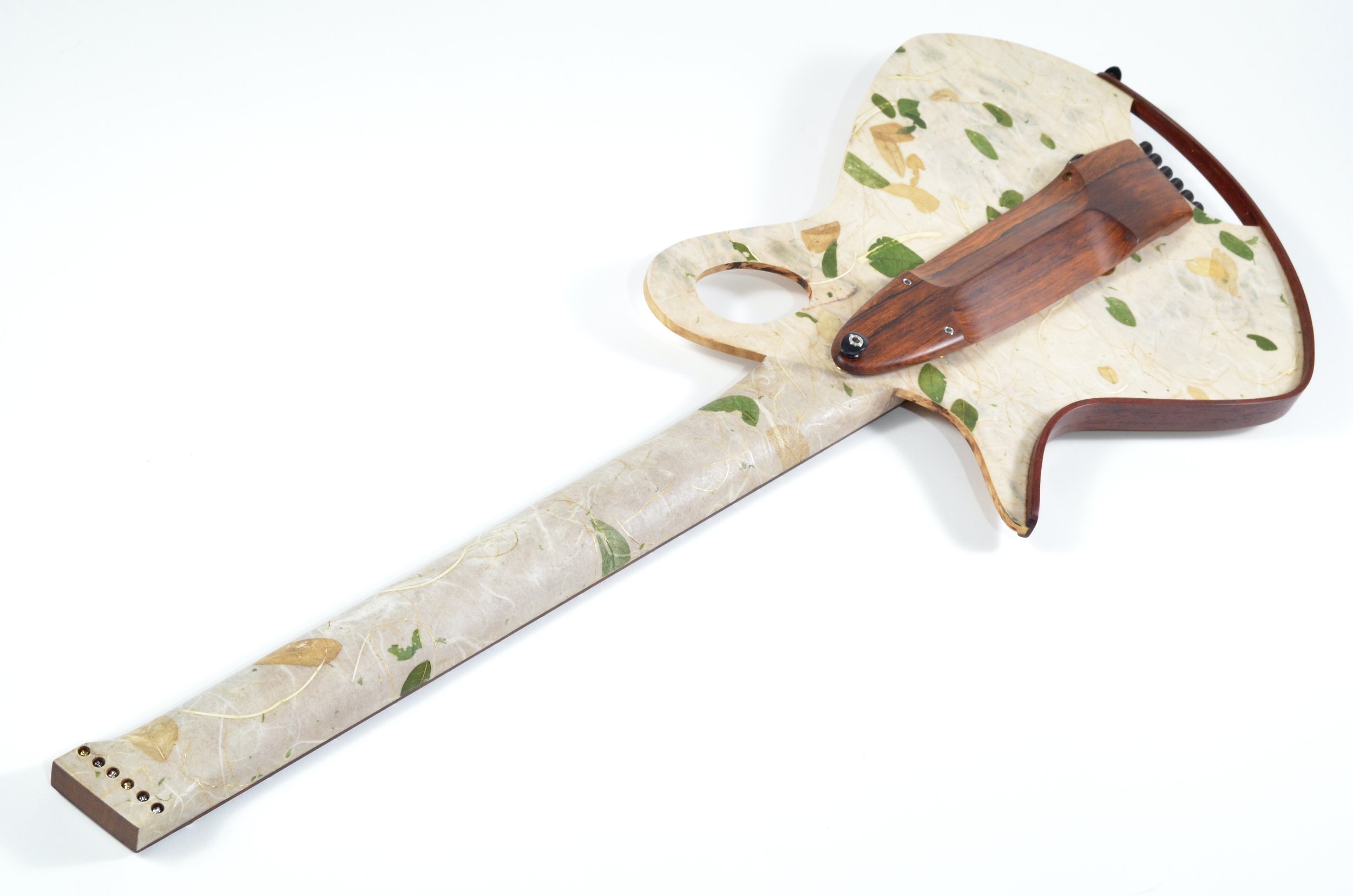
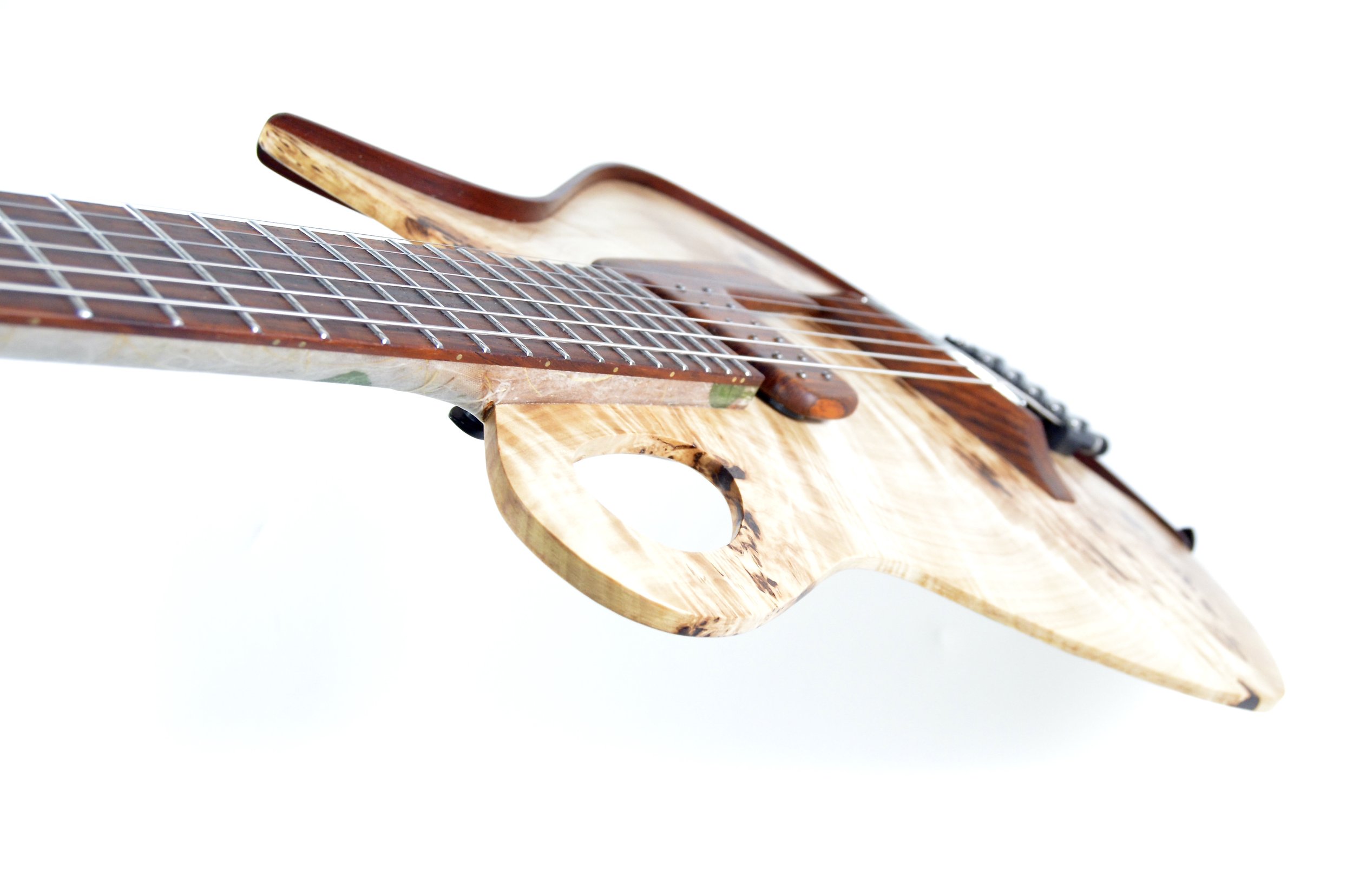
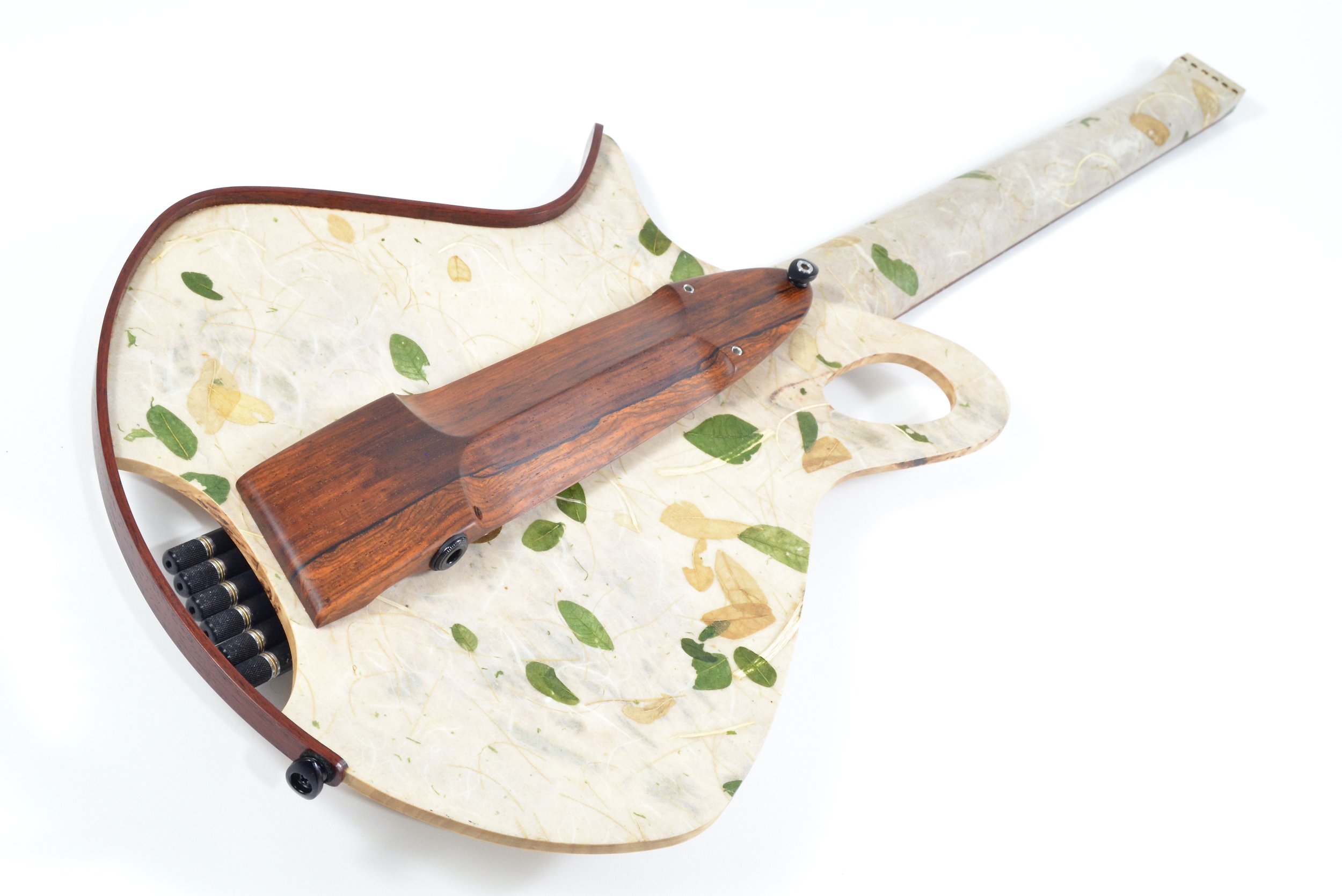
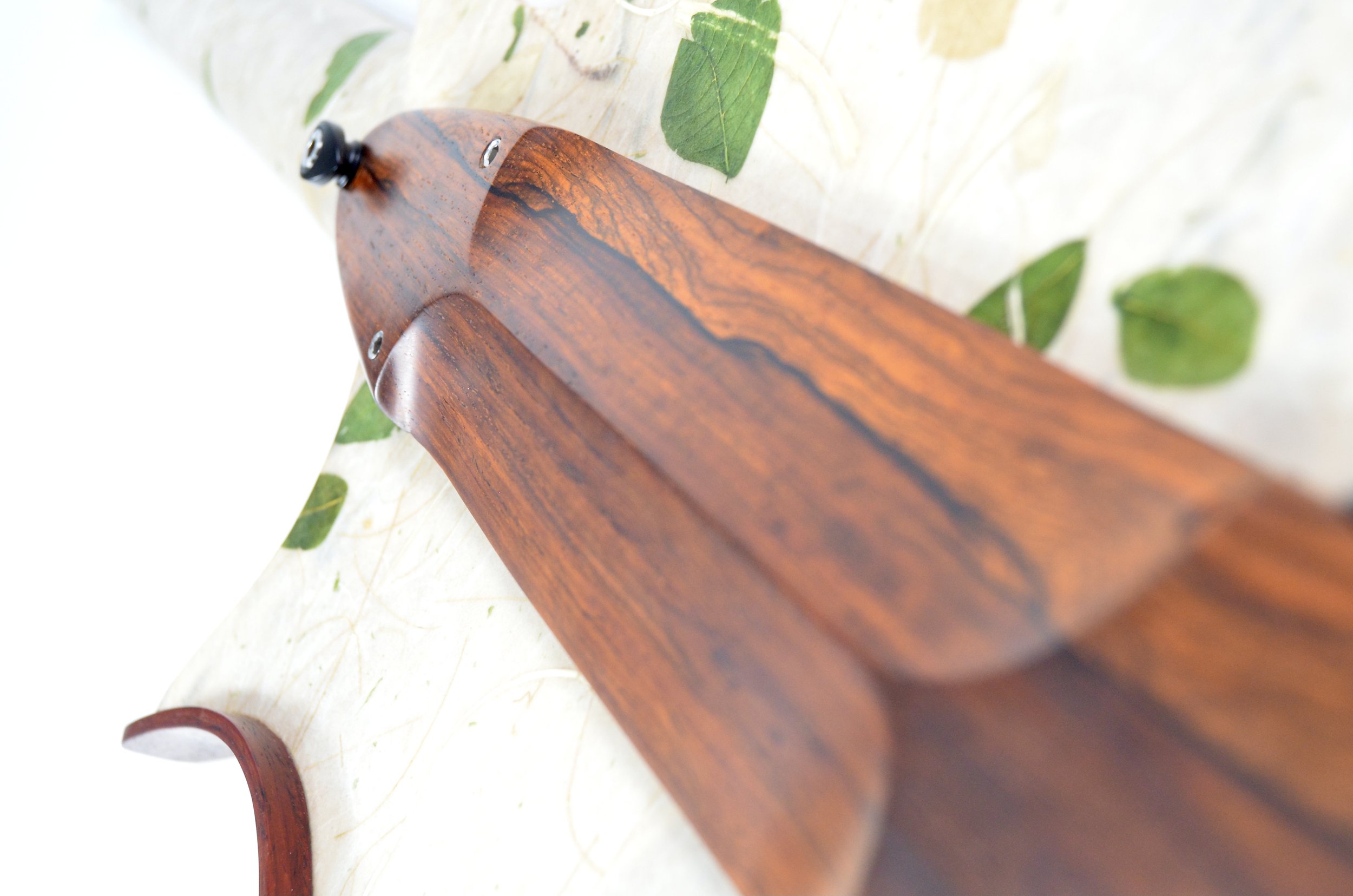

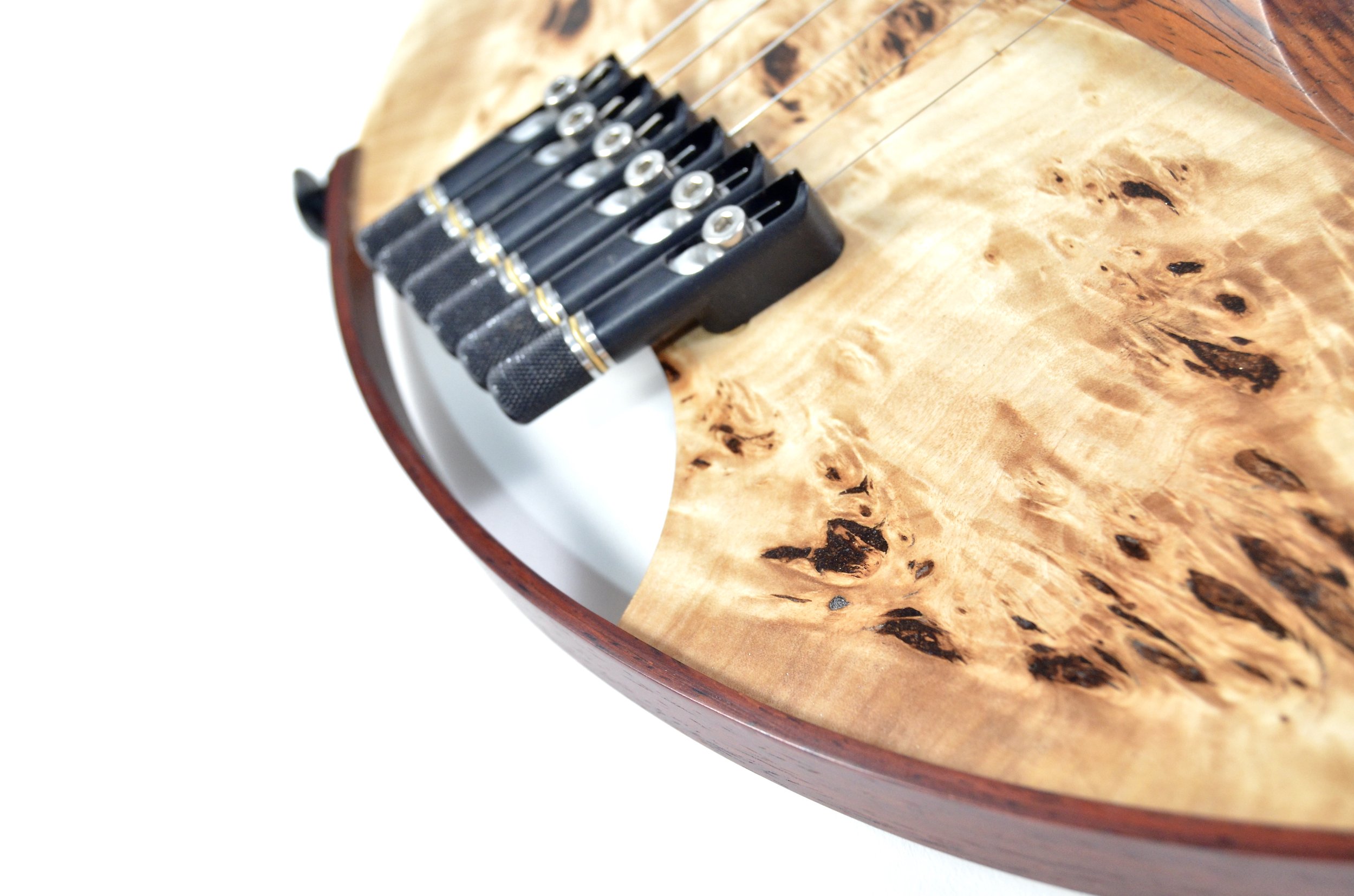
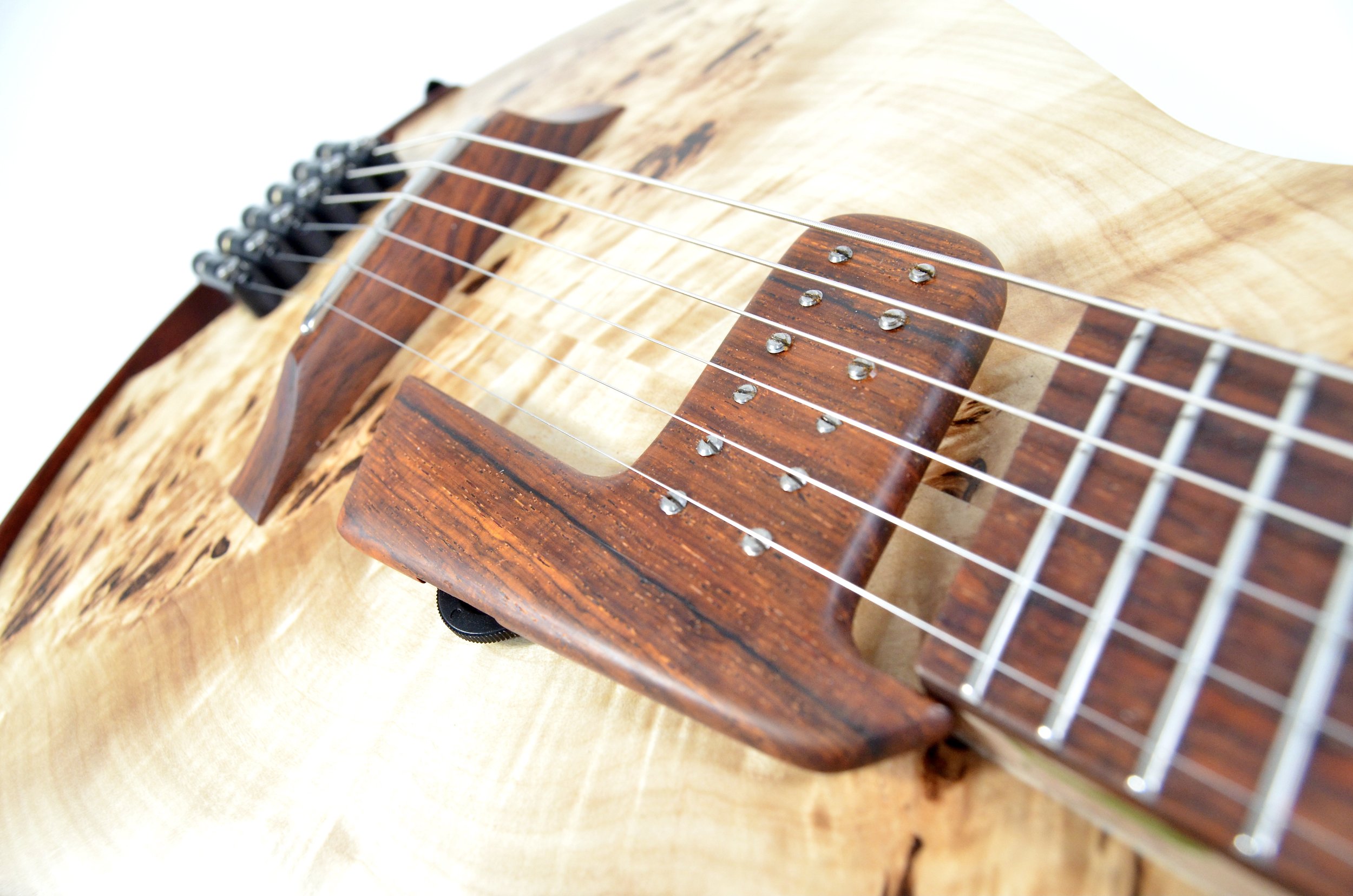
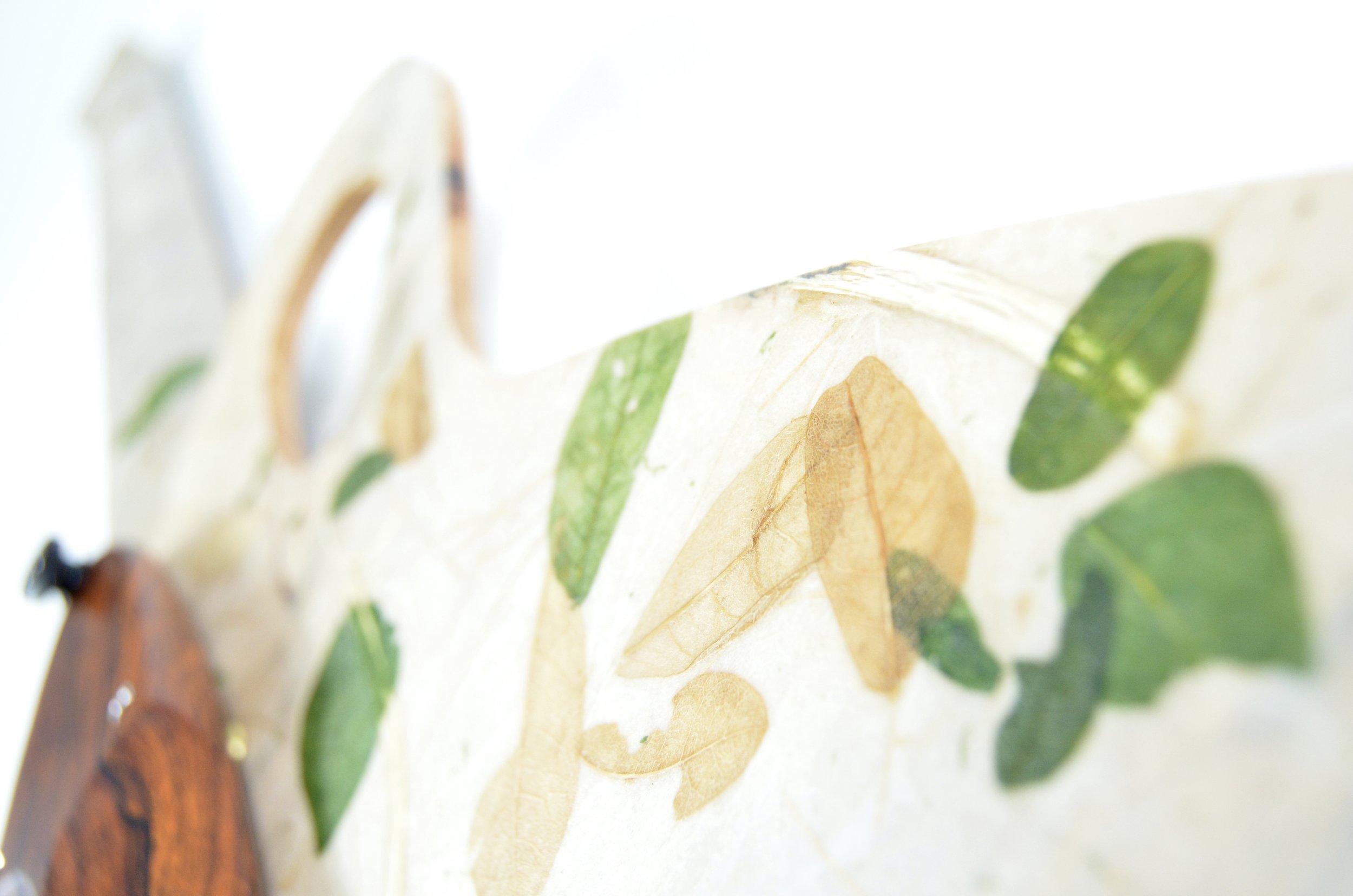
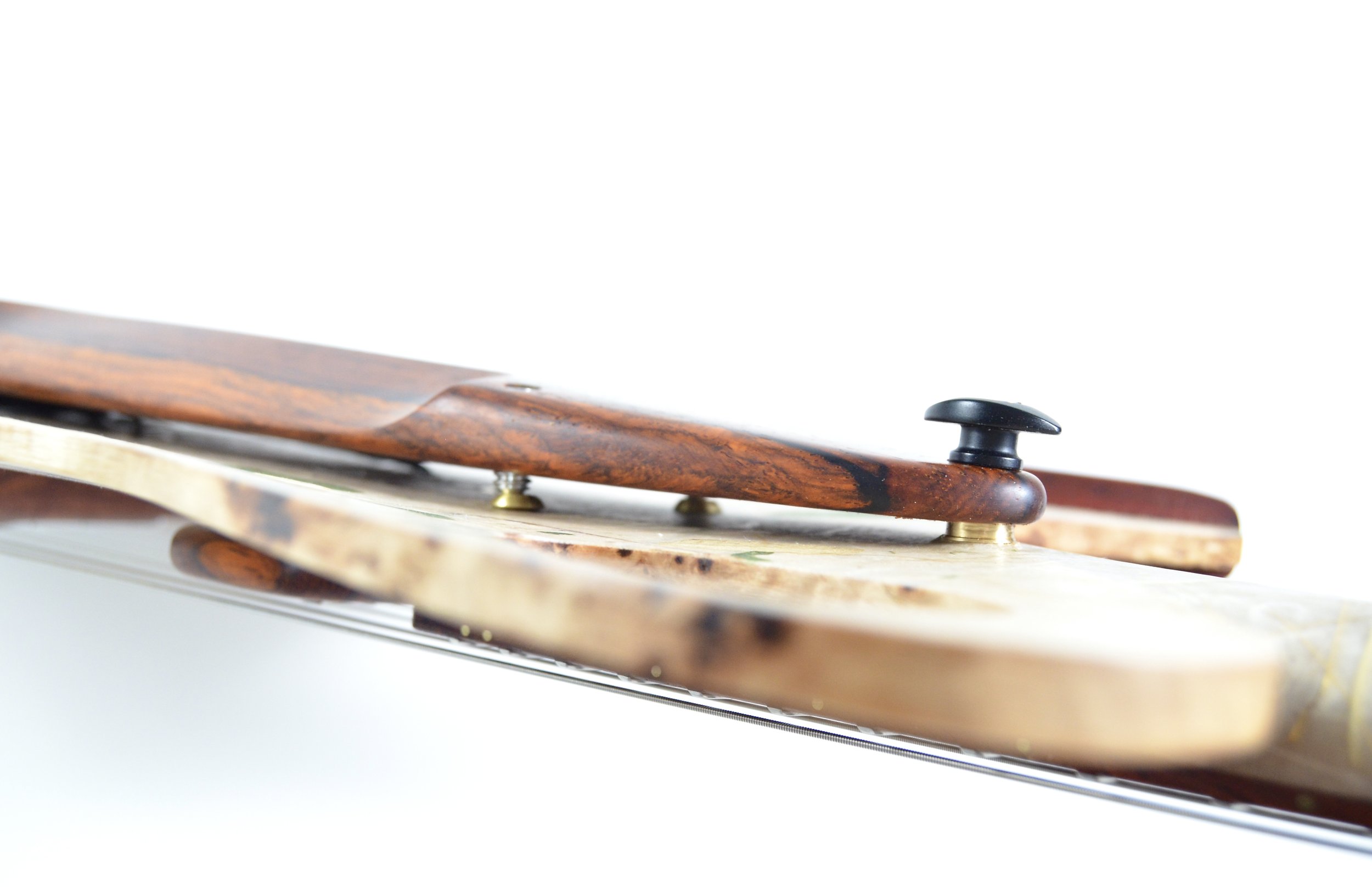
A composition in three elements: wood, linen, and paper. Alternatively, the three elements could be timber, leaves, steel. Or perhaps air, water, and earth; or red, gold, and tan.; or something entirely different. No matter how you choose to read it, Haiku is one of my more creative and enigmatic compositions.
Originally inspired by Ken Parker’s remarkable Fly prototype and the vanishingly rare Vivi-Tone electric guitar, Haiku quickly morphed into something new, reflecting the influence of leading practitioners of contemporary lutherie such as Michi Matsuda, Pete Malinowski, Matt Proctor, Enrico Didonato, and many others. But my hope is that the end result speaks on its own terms, and doesn’t resemble a hodge-podge of the people, places and objects that have informed my work.
Unlike the style of poetry, this Haiku has physical form and thus must conform to the requirements of being a guitar. And that it does: The wafer-thin body is edged with a knee-rest of bent cocobolo wood, and backed with a highly stylized structural beam to match. The body and neck are given stiffness and resilience by a painstaking lamination of rami cloth (the strongest of natural fibres) with two layers of mulberry-bark paper with gold thread and raintree-leaf inclusions.
The pickup is designed and made in-house, integrated with the pick guard and single volume control. A few extra features are hidden nearly out of sight: the neck angle can be minutely adjusted via two set-screws on the back, and there are two piezo elements routed to the ring terminal of the output jack, allowing the player to pick up acoustic tone, or handling sounds, or treated to trigger digital effects.
I hope that this little poem of a guitar will inspire others as I myself have been inspired.
Available through Dolphin Music Japan
